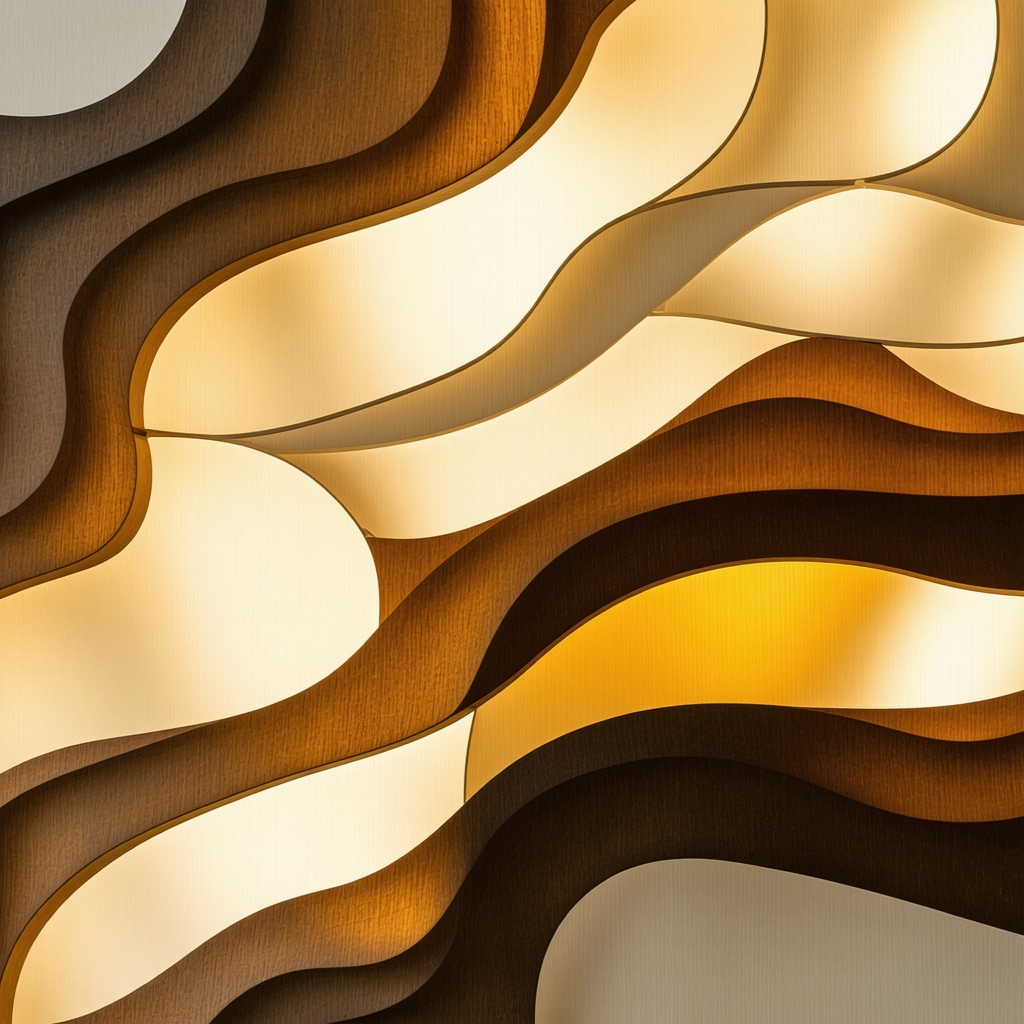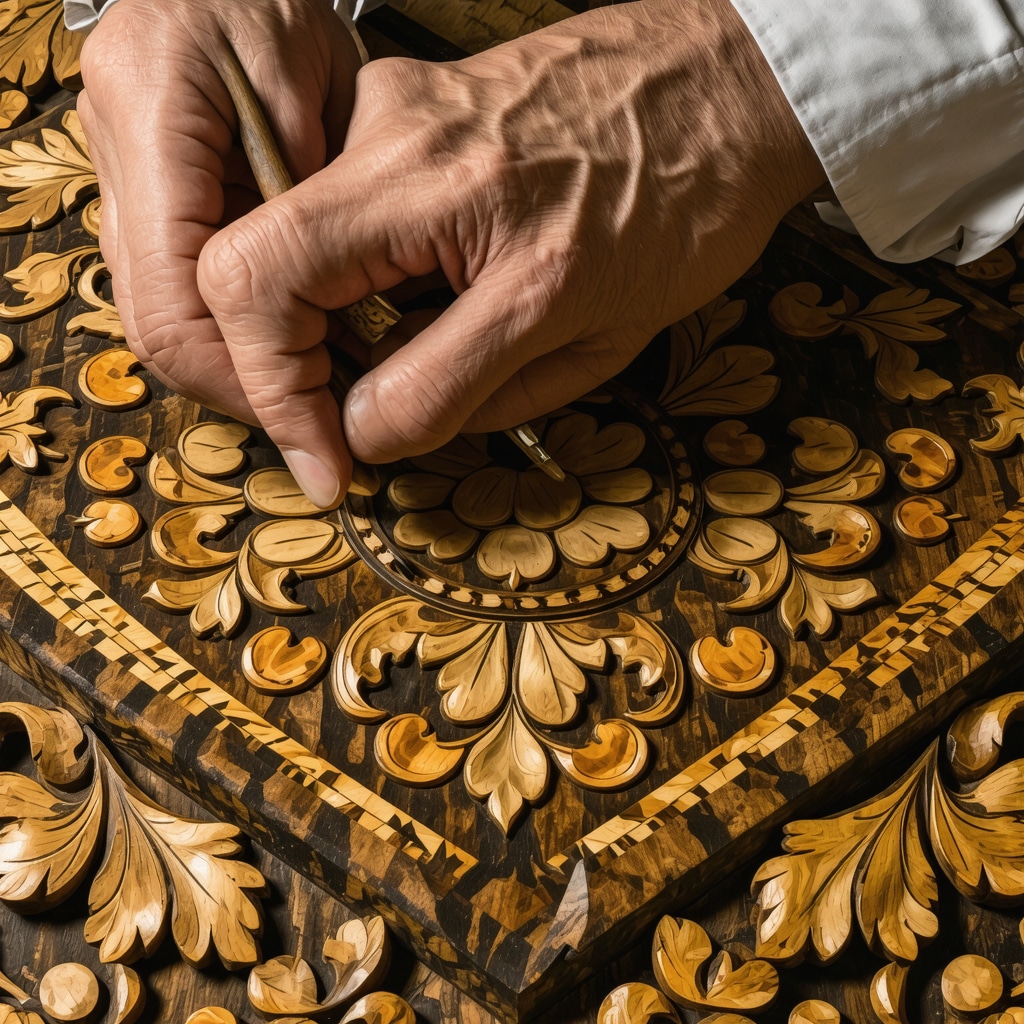My First Encounter with the Art of Marquetry
I’ll never forget the first time I laid eyes on a beautifully inlaid piece of furniture. It was at a local craft fair, and I was captivated by the intricate patterns and vibrant colors that seemed to breathe life into the wood. That moment sparked my fascination with master marquetry & inlay techniques, inspiring me to dive deep into this exquisite craft.
Discovering the Secrets of Decorative Woodworking
As I began exploring, I realized that marquetry is more than just a decorative veneer. It’s a meticulous art that combines patience, precision, and a keen eye for detail. I started practicing by cutting tiny pieces of different woods, learning to fit them seamlessly together to create stunning images and patterns. The process was challenging but incredibly rewarding, especially when I saw my first successful inlay come to life.
Unlocking Techniques for Stunning Inlay Designs
One of the most valuable resources I found was a tutorial on advanced encaustic painting techniques. It taught me the importance of layering and texture, which I adapted to my marquetry projects. Techniques like fretwork and double inlay opened new creative avenues for me, allowing me to craft more complex and vibrant designs.
What Makes a Perfect Inlay Piece?
Have I Truly Mastered the Art, or Is There Always Room to Grow?
This question constantly lingers in my mind. I believe that in decorative woodworking, mastery is a journey, not a destination. Every project teaches me something new—be it about wood behavior, color harmony, or geometric precision. I encourage fellow enthusiasts to embrace the learning process and view each piece as a step closer to their ideal craft.
If you’re curious about expanding your skills, I recommend exploring eco-friendly pigments to add vibrant, natural colors to your inlay work. And, of course, I’d love to hear your experiences—share your stories or ask questions in the comments below!
Deepening Your Craft: Advanced Marquetry Techniques for the Discerning Artisan
Building upon foundational skills, seasoned woodworkers seek to elevate their marquetry & inlay craftsmanship through innovative methods and nuanced artistry. One such technique gaining popularity is layered veneer inlay, which involves stacking multiple thin wood layers to create depth and intricate visual effects. This method requires precise control of veneer thickness and an understanding of light transmission through each layer, reminiscent of the principles used in layered encaustic techniques. 
Integrating Modern Tools with Traditional Craftsmanship
While hand tools remain essential, the integration of digital technology has transformed the landscape of decorative woodworking. CNC routers and laser cutters now enable artisans to produce complex patterns with unparalleled precision, reducing material waste and accelerating project timelines. However, mastery still demands a thorough understanding of the underlying principles—like wood grain orientation and color harmony—to ensure that automated processes enhance rather than compromise artistry. For in-depth guidance on incorporating these tools, visit creative DIY home decor ideas.
How can artisans balance technological innovation with traditional craftsmanship to preserve the soul of marquetry? This is a question that invites reflection on the evolution of art and technique in woodworking.
Color and Material Selection: The Heart of Vibrant Inlay Work
In expert hands, the choice of woods and pigments can transform a simple design into a masterpiece. Incorporating natural dyes, such as those detailed in natural earth paints, allows artists to achieve authentic, vibrant hues that age beautifully over time. Combining these with exotic woods like Madagascar ebony or pau ferro can add striking contrast and depth. The key lies in understanding each material’s properties—how it reacts to humidity, light, and wear—and selecting combinations that will stand the test of time. If you’re looking to push your color palette further, experimenting with foraged pigments can yield unique, earthy tones that connect your work to nature’s palette.
Would you like to explore how to create your own custom color palette for marquetry projects? Share your thoughts or questions below, and let’s deepen our mastery together!
The Subtle Art of Material Selection and Its Impact on Craftsmanship
One of the most overlooked yet critical aspects of advanced marquetry is the meticulous selection of materials. Over the years, I have learned that understanding the unique properties of each wood—such as grain direction, color stability, and reaction to humidity—can make or break a project. For example, choosing a highly figured burl for focal points adds depth, but requires careful handling to prevent warping. Incorporating exotic woods like Madagascar ebony or pau ferro not only enhances visual contrast but also challenges the artisan to master cutting and fitting techniques that accommodate their density and hardness.
Deep Dive into Layered Veneer Inlay: Creating Depth and Dimension
Building upon basic inlay techniques, layered veneer inlay introduces a new dimension to woodworking artistry. This method involves stacking multiple thin layers of veneer, each precisely cut and assembled to create intricate visual effects that seem to glow with depth. I recall a project where I used this approach to craft a landscape scene, with each layer representing different atmospheric layers—foreground, middle ground, and background. The key is controlling light transmission through each veneer layer, a concept borrowed from layered encaustic painting techniques, which I found fascinating to adapt for woodworking. You can explore this further in advanced encaustic painting techniques.
Harnessing the Power of Layered Veneer Inlay for Depth and Intricacy
Building on foundational skills, seasoned artisans often turn to layered veneer inlay to elevate their craft with astonishing depth and dimensionality. This sophisticated technique involves stacking multiple ultra-thin veneer layers, each meticulously cut and assembled to evoke a sense of motion and life within the design. The process mirrors principles from layered encaustic painting, where light transmission through each layer plays a pivotal role, creating a luminous glow that captivates viewers.
The Art of Material Selection: Beyond Aesthetics to Durability
Choosing the right materials is vital for achieving lasting beauty and structural integrity. Exotic woods like Madagascar ebony and pau ferro offer striking contrast but demand precision handling due to their density. Meanwhile, natural dyes sourced from foraged plants, as detailed in natural earth paints, enable vibrant hues that age gracefully. Mastering this material harmony requires deep knowledge of each wood’s behavior, reaction to environmental factors, and how they interact with pigments, ensuring your work withstands the test of time.
Have you experimented with combining exotic woods and natural dyes? Share your insights or ask for tips in the comments below!
Integrating Modern Precision Tools with Traditional Techniques
While hand tools preserve the soul of marquetry, digital innovations like CNC routers and laser cutters have revolutionized pattern accuracy and complexity. These tools reduce material waste and accelerate production, but their effective use depends on a profound understanding of the craft’s core principles—grain orientation, color matching, and joint fitting. For an advanced perspective on blending these technologies seamlessly, explore creative DIY home decor ideas. Striking a balance between innovation and tradition ensures your artistry remains authentic and compelling.
Would you like to learn how to incorporate digital tools without losing the handcrafted essence? Reach out or comment below to deepen your mastery.
Things I Wish I Knew Earlier (or You Might Find Surprising)
The Hidden Depth of Material Choices
One of the most overlooked aspects in marquetry is the profound impact of selecting the right woods. I once experimented with a simple design using just any available wood, only to find that humidity and light caused warping over time. Now, I always consider not just the visual appeal but also the durability and environmental reactions of materials, which has significantly improved my projects.
The Power of Layering Techniques
Layered veneer inlay was something I discovered late in my journey. Once I started stacking multiple thin layers to add depth, my designs gained a whole new dimension. It’s a technique that combines artistry with precision, and mastering it has allowed me to create more intricate and luminous effects in my work.
Balancing Hand Tools and Technology
I used to rely solely on traditional hand tools, but integrating modern tools like CNC routers has revolutionized my workflow. The key is understanding the core principles—grain direction, cutting angles—and then using technology to enhance precision without losing the handcrafted feel. It’s about harmony between the old and new.
Color and Pigment Selection Matters
Choosing the right pigments or natural dyes can make or break an inlay piece. I’ve experimented with eco-friendly pigments, which age beautifully and add authenticity to my work. Natural dyes from foraged plants can create unique earthy tones, connecting my art more deeply with nature.
The Art of Material Compatibility
Not all woods or pigments play nicely together. Over time, I’ve learned to match materials that have similar expansion rates and color stability. This foresight prevents cracks and fading, ensuring that my pieces remain stunning for years to come.
Resources I’ve Come to Trust Over Time
- Natural Earth Paints: These eco-friendly pigments have transformed my approach to color, offering vibrant hues that age gracefully. I highly recommend exploring their offerings for sustainable projects.
- Advanced Encaustic Techniques: The tutorial on layered encaustic painting opened my eyes to how layering principles can be adapted to marquetry, inspiring new creative avenues.
- Creative DIY Home Decor Ideas: This site provides innovative ideas for integrating woodwork into home decoration, sparking fresh project ideas and techniques.
- Expert Guides on Exotic Woods: Learning about materials like Madagascar ebony and pau ferro has enriched my understanding of texture and contrast, elevating my craftsmanship.
Parting Thoughts from My Perspective
Exploring the art of marquetry & inlay has been a journey of patience, experimentation, and continuous learning. The most valuable lesson I’ve gained is that mastery isn’t about perfection but about embracing each project as a step towards deeper understanding and skill. Whether you’re a beginner or seasoned artisan, never underestimate the power of thoughtful material selection and innovative layering techniques. If this resonated with you, I’d love to hear your thoughts or experiences in the comments below. Share it with someone who might find it inspiring, and keep creating with passion!

